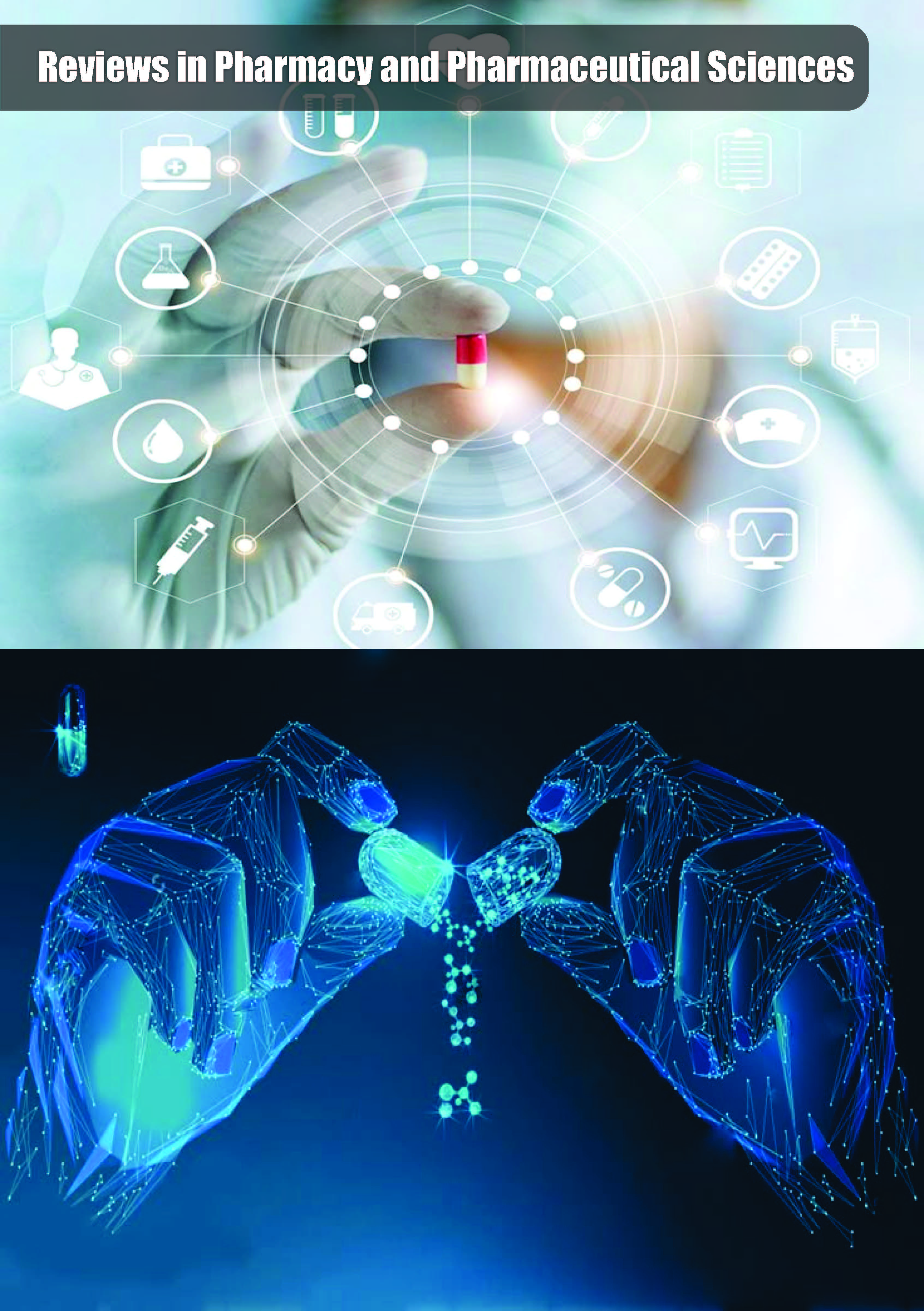Reviews in Pharmacy and Pharmaceutical Sciences

Mini Review - (2021) Volume 1, Issue 1
Application of Biostatistics in Pharmaceutical Science
Received Date: Oct 30, 2021 / Accepted Date: Dec 08, 2021 / Published Date: Dec 15, 2021
Abstract
Biostatistics has an important role in both designing a pharmaceutical experiment and evaluating its result. Randomization techniques are essentially important in designing an experiment. The goal of randomization is transforming systematic errors into random errors and confirming comparability among experimental groups. Randomization also provides a rationale for applying statistical tests. Combining randomization techniques with blinding and local control enables us to construct a scientifically reliable and effective experiment. An appropriate statistical analysis absolutely depends on the method of randomization. In order for a pharmacological study to be successful, it is very important to consider statistical aspects in the designing stage.
Keywords
Biostatistics, Pharmaceutical Science, Statistical techniques, Goiter
Introduction
Biostatistics is the application of statistics in the development and use of therapeutic drugs and devices in humans and animals. Simply it is the science of data. It has huge application in pharmaceutical science and in medical technology.
In Pharmacology
To find the action of drug, a drug is given to animals or humans to see whether the changes produced are due to the drug or by chance.
To compare the action of two different drugs or two successive dosages of the same drug.
To find the relative potency of a new drug with respect to a standard drug.
In Medicine
To compare the efficacy of a particular drug, operation or line of treatment-for this, the percentage cured, relieved or died in the experiment and control groups, is compared and difference due to chance or otherwise is found by applying statistical techniques.
To find an association between two attributes such as cancer and smoking or filariasis and social class-an appropriate test is applied for this purpose [1].
Cough in typhoid is found by chance and fever is found in almost every case. The proportional incidence of one symptom or another indicates whether it is a characteristic feature of the disease or not, to identify signs and symptoms of a disease or syndrome.
In Community Medicine and Public Health
To test usefulness of sera and vaccines in the field, percentage of attacks or deaths among the vaccinated subjects is compared with that among the unvaccinated ones to find whether the difference observed is statistically significant.
In epidemiological studies, the role of causative factors is statistically tested. Deficiency of iodine as an important cause of goiter in a community is confirmed only after comparing the incidence of goiter cases before and after giving iodized salt.
In public health, the measures adopted are evaluated. Lowering of morbidity rate in typhoid after pasteurization of milk may be attributed to clean supply of milk, if it is statistically proved. Fall in birth rate may be the result of family planning methods adopted under National Family Welfare Programme or due to rise in living standards, increasing awareness and higher age of marriage [2].
Statistical Expertise in Drug Discovery
Researchers all over the world are searching for the next generation of drugs to combat some of the greatest health threats we face in the 21st century. The biggest problem is often finding the right molecule to fight a disease with; many of our existing drugs have been discovered more or less by accident. It can be enormously time-consuming and expensive to test new drug candidates systematically in the lab to identify the ones with promising therapeutic properties to take forward into clinical trials.
A new initiative in the department of statistics offers pharmaceutical companies the tools they need to make this process dramatically quicker and more efficient.
One class of proteins, antibodies, is of particular interest. Antibodies are an essential part of the immune system, since they bind to antigens (proteins or sugars) on the surface of a bacteria or virus and so mark it out as an invader. They are now being investigated for a range of uses including cancer treatment.
As with other drug candidates, there are vast numbers of antibodies that could be considered. Statistical software developed by the Deane group is able to model antibodies in three dimensions and predict what properties they will have. The software helps companies to priorities which antibodies they should investigate further, and even to design entirely new antibodies [3].
Assay Data in Drug Discovery
As one might expect, there are usually a large number of assays used to optimize molecules and these vary in complexity and type. The primary pharmacology assays are usually related to potency against the target or phenotype. In traditional target-based projects, initial potency measurements are from simple biochemical ligand-binding assays. Compounds that show sufficient activity against the target are then run against some type of functional assay to verify the relevance of the hit [4].
The initial screen for potency is often conducted at a single concentration; molecules that prove interesting might then be followed by a dilution series of the concentration to verify that a dose-response relationship exists. To do this, the assay value is determined over a range of concentrations and a statistical dose- response model is fit to the data.
Computers in Medicine
The computers can be used and are used now in solving various problems in biostatistics for;
1. Collection, compilation, tabulation and diagrammatic presentation in the manner required for any size of data for completeness and accuracy.
2. Finding averages; coefficient of variation, standard deviation and standard error and percentiles, etc. of any size of data simultaneously.
3. The application of tests of significance such as ‘Z’, ‘t’ and χ2, correlation and regression coefficients and other tests to find probability (P values), necessary in practice of medicine, public health and in research.
4. Construction of life tables to find longevity of life at birth and at any age such as on retirement for budgeting pension and other old age problems.
5. Probability of length of life after cancer without or after operation.
6. Chances of survival and period of survival after operation on heart such as bypass, closure of foramen ovale, repair and replacement of valves of heart, etc.
7. Successful chances of grafting of tissues such as cornea and parts of liver.
8. Survival after transplantation of heart, kidney and removal of brain tumor, etc. World Registry of such surgical operations helps in above applications.
The MINITAB, SPSS, SAS and STATA are some of the well-known statistical software packages for the personal computer, which are used for the tabulation and statistical analysis of data.
There are many software used in pharmaceutical industry and in medical technology.
These software are further categorized on the basis of task performing by the software and their working principle like software assessing pharmacokinetic parameters, ligand interactions and molecular dynamic, molecular modeling and structural activity relationship, image analysis and visualizers, data analyzer and behavior analysis software. Simply they analyses data and further proceed.
SPSS
Excellent graphic user interface makes statistics analysis easier, including many most complex models. SPSS is a Windows based program that can be used to perform data entry and analysis and to create tables and graphs. SPSS is capable of handling large amounts of data and can perform all of the analyses covered in the text and much more.
Minitab
A statistics package developed by some researchers to help six sigma professionals analyze and interpret data to help in the business process is called Minitab. The data input is simplified so that it can be easily used for statistical analysis and it also helps in manipulating the dataset. If trends, patterns and charts are given, those are analyzed and interpreted so that final conclusion can be made. The answers are given and those are magnified with the given products or services to help in the business. Problem-solving is made easy and faster with the Minitab tool [5].
It helps professionals in:
Simplifying the data input for statistical analysis manipulating the dataset
Identifying trends and patterns
Extrapolating the answers to the existed problem with product/services
STATA
Stata is a powerful statistical software that enables users to analyze, manage, and produce graphical visualizations of data. It is primarily used by researchers in the fields of economics, biomedicine, and political science to examine data patterns. It has both a command line and graphical user interface making the use of the software more intuitive. This command-based statistical packages offers a lot flexibility for data analysis by just altering a different command options or writing a do-file. Meanwhile, the program language keeps a simple structure, so easy to learn that the users can focus on the statistical modeling.
SAS
It is expanded as Statistical Analysis System. SAS was developed at North Carolina State University from 1966 until 1976, when SAS Institute was incorporated. SAS was further developed in the 1980s and 1990s with the addition of new statistical procedures, additional components. SAS provides a graphical point-and-click user interface for non-technical users and more through the SAS language. It is especially strong in Analysis of Variance (ANOVA), the general linear model, and their extensions.
These are the some software which used maximally in drug discovery and pharmaceutical industries which introduction discuss above.
References
- Castaneda LB, Arunachalam V, Dharmaraja S. Introduction to probability and stochastic processes with applications. Contemp Phys. 2012; 54:2.
- Selvamuthu D, Dipayan D. Introduction to statistical methods, design of experiments and statistical quality control. 2018; 63-70.
- Sliwoski G, Kothiwale S, Meiler J, Lowe EW. Computational methods in drug discovery Pharmacol. Review. 2014; 66: 334-395.
- Ross SM. Introduction to probability and statistics for engineers and scientists. 2014.
- Former best buy CEO: Purpose-driven business transformation.
Copyright: © 2025 This is an open-access article distributed under the terms of the Creative Commons Attribution License, which permits unrestricted use, distribution, and reproduction in any medium, provided the original author and source are credited.

